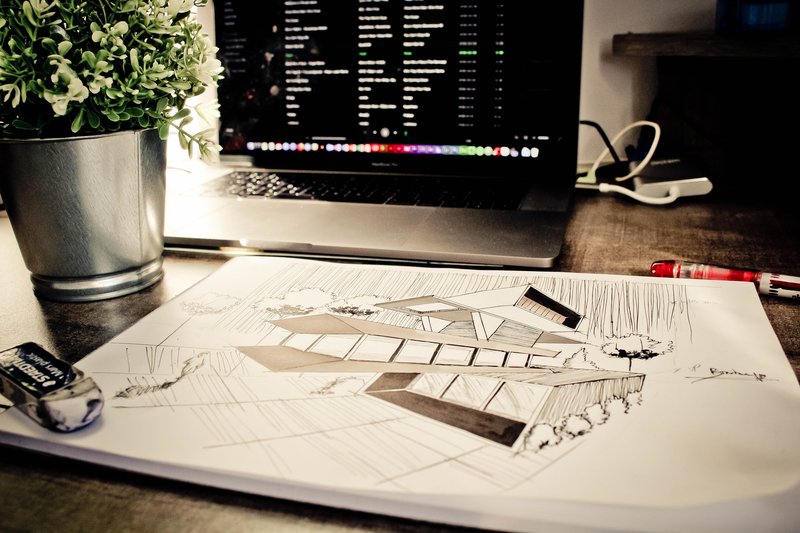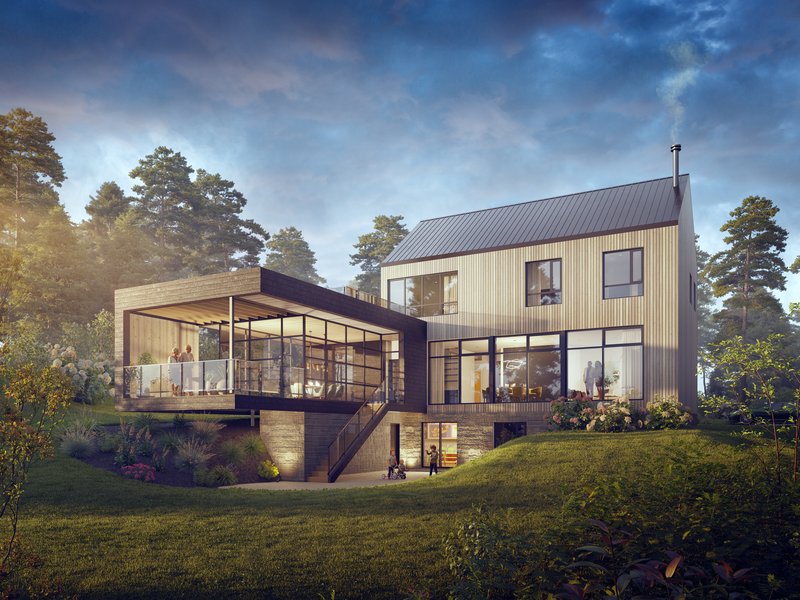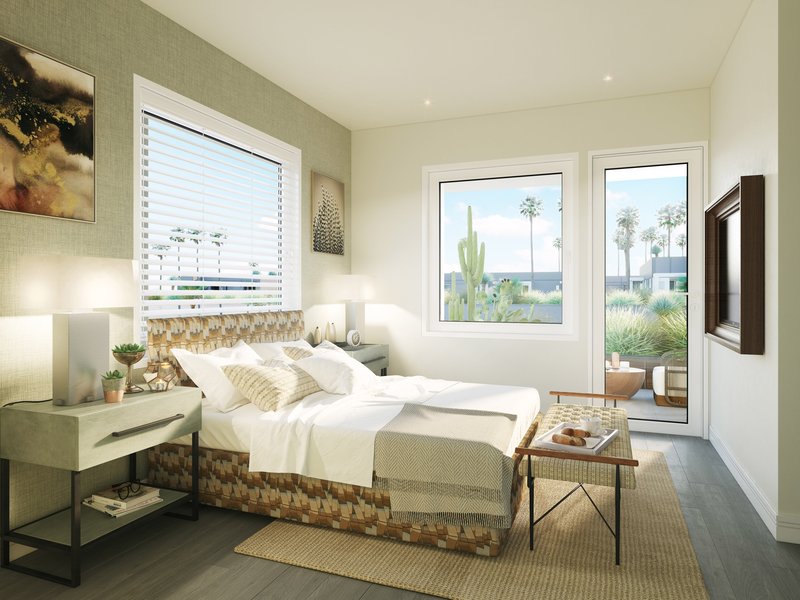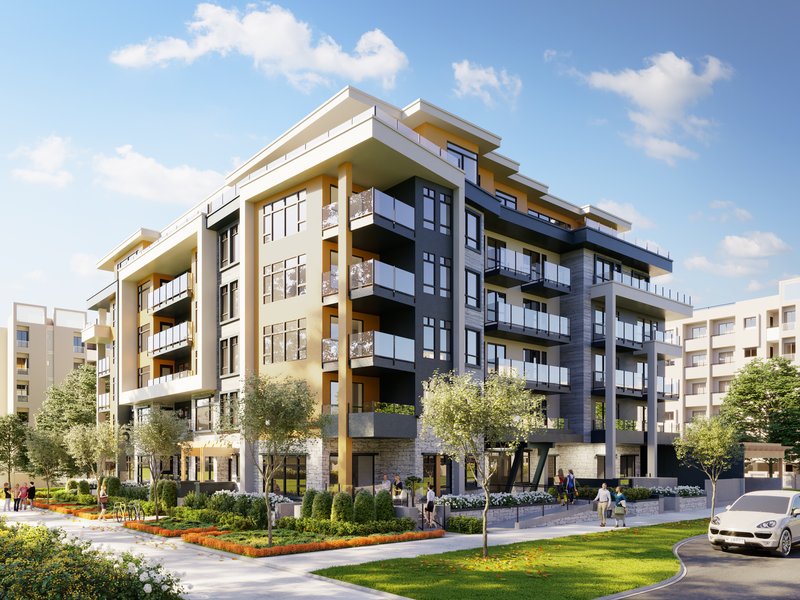What you need to get your architectural rendering project started
A Practical Guide to Getting the Most Out of Your Architectural Rendering Projects
Welcome to our page for getting started on a 3D rendering project! If you're curious about architectural rendering, you've come to the right place.
Architectural rendering projects play a crucial role in bringing building designs to life and providing a visual representation of what is yet to be constructed. Through the use of advanced 3D modelling and rendering techniques, architectural renderings bridge the gap between imagination and reality. They offer a glimpse into the future, allowing stakeholders, clients, and design professionals to visualize the finished project before a single brick is laid. In this article, we will explore the world of architectural rendering, understand its definition, and uncover the multitude of benefits and uses it offers.
Architectural renderings serve various purposes, with the most prevalent ones being:
- Pre-construction marketing: Developers, realtors, or builders often employ architectural renderings to showcase and promote properties that are yet to be constructed. These renderings allow potential buyers to envision the building and its features, despite it not physically existing at that point.
- Approvals and funding: Architects, engineers, and designers utilize architectural renderings to create comprehensive packages for regulatory bodies. These renderings help in gaining necessary approvals and securing funding for their projects. By presenting an accurate visual representation, stakeholders can better understand the proposed design and its potential impact.
- Design exploration: Homeowners or general contractors frequently employ architectural renderings to visualize the outcome of a renovation project. By creating renderings that depict the planned changes, they can assess the aesthetics and functionality of the proposed design before implementation.
On this resource page, we'll provide you with valuable information, tips, and tools to kickstart your 3D rendering journey. Whether you're a beginner or looking to enhance your existing skills, we've got you covered. Let's dive in and unlock the world of architectural rendering!
Providing Architectural Plans

Q) "Do we need to provide architectural plans to have a 3D Rendering done?"
One of the initial steps in creating architectural renderings is to provide the necessary architectural plans, whether it's for showcasing the building's exterior or interior. At RealSpace 3D, our pricing is based on the architectural plans, floor plans, and elevation drawings. The file format for quoting purposes is not crucial, but once the project commences, we prefer receiving the files in CAD format. However, we can work with various file types, including even a napkin sketch, although photographic references are typically the minimum requirement.
3D Rendering without Architectural Plans
Even projects without architectural plans can still benefit from the creation of architectural 3D renders, although the process can be more challenging. In such cases, we often receive images of similar buildings or interior spaces that serve as inspiration. While we won't replicate these buildings exactly, they provide a reference point for us to piece together the desired outcome.
Define expectations for your architectural rendering project early
When commissioning an architectural rendering, it is crucial to establish clear expectations as a client. Consider the intended purpose of the project. Is it primarily for marketing, requiring the highest possible quality? Or is it mainly to satisfy regulatory bodies, where a more cost-effective option would suffice?
Q) "When are budget/basic architectural renders 'good enough'?"
If the renderings are primarily intended to appease regulatory bodies, opting for cheaper renders may be a viable choice. However, caution should be exercised when considering cheap overseas companies. Even for gaining approval from regulatory bodies, high-quality 3D renders can make a difference. A reputable rendering company can capture the buildings in the most favorable ways, influencing decision-makers and enhancing the chances of approval. Moreover, these renderings can have long-term utility, serving as valuable marketing assets if you decide to sell the property. If cost is a significant factor at this stage, communicate this clearly to the rendering company you're working with so that they can accommodate your needs accordingly.
Q) "When does it make sense to spend more on architectural renders?"
3D Architectural Renders are highly cost-effective marketing tools, especially when attracting presales for new developments. In such cases, it makes sense to invest a little extra to obtain top-of-the-line renders and ensure an exceptional outcome. In many situations, a comprehensive architectural rendering package, complemented by a strong online presence, is sufficient for the sales process, eliminating the need for a full-fledged sales center. Building a sales center can incur costs upwards of $100,000, which may not be necessary in a hot real estate market.
To delve deeper into the intricacies of 3D architectural rendering pricing, we recommend exploring our comprehensive pricing guide.
Determining Architectural Rendering Camera Positions

Q) "Do clients have a say in selecting camera angles for 3D Architectural Renderings?"
Choosing the camera angles for your architectural renderings is a collaborative process between you and the architectural rendering company. At Realspace, we actively engage with our clients to determine the desired camera positions. During the initial stages, we will inquire about the specific areas you wish to showcase in your 3D renderings. For instance, indicating your preference for a front facade rendering or a wide-angle shot featuring the kitchen and living room provides us with sufficient information to initiate the pricing process.
Once the general area has been established, we proceed to create a rough markup on the architectural plans, confirming the camera angle for each scene. This step ensures alignment between your vision and our understanding of the desired perspectives. After receiving your confirmation, we move on to the final camera angle confirmation stage. Typically, we present you with three clay render camera options, allowing you to make the final selection based on your preferences.
Optimizing Renders for Different Platforms
In today's digital age, architectural renderings are not confined to static presentations or printed materials. They have become dynamic assets that are shared across various platforms, including websites, social media, and presentations. Understanding the importance of adapting renders for different platforms and optimizing them accordingly is essential to ensure maximum impact and engagement. Let's explore how to optimize your architectural renders for different platforms.
Adapting to Different Platforms
Each platform has its own specifications and requirements for displaying visual content. It is crucial to consider the unique characteristics of each platform to deliver an optimized viewing experience. Here are a few key considerations:
Websites: When showcasing architectural renderings on websites, it is important to balance visual quality with file size. Optimized rendering settings can help maintain image quality while minimizing load times. Additionally, consider responsive design principles to ensure renders adapt seamlessly to different screen sizes and devices.
Social Media: Social media platforms offer a powerful medium for sharing architectural renderings and reaching a wider audience. However, these platforms often have restrictions on file size and aspect ratios. Prioritize eye-catching visuals and use formats that are compatible with each platform, such as JPEG or PNG for images and MP4 or GIF for animations.
Presentations: When incorporating architectural renders into presentations, focus on clarity and visual impact. Ensure that renderings are optimized for the presentation software, considering factors like aspect ratio and resolution. Using high-resolution images or embedding interactive 3D models can enhance the audience's engagement and understanding.
Optimizing Render Settings and Formats
To optimize architectural renders for different platforms, consider the following tips:
Resolution and Size: Find the right balance between image quality and file size. Higher resolutions may be suitable for large-scale prints or detailed presentations, while web-based platforms might require smaller file sizes for faster loading.
Compression and File Formats: Utilize compression techniques to reduce file sizes without compromising image quality. Experiment with different compression algorithms or formats like JPEG and PNG to find the optimal balance.
Aspect Ratio: Adapt renders to the aspect ratio requirements of each platform. Consider cropping or resizing renderings to ensure they fit within the designated space without distortion.
Consistency in Branding: Maintain consistency in branding elements, such as logos, color schemes, and typography, across different platforms. This cohesive visual identity helps reinforce brand recognition and creates a unified experience for viewers.
By optimizing your architectural renders for different platforms, you can effectively leverage the strengths of each medium and reach a wider audience. Consider the specific requirements and characteristics of each platform, and adapt your renderings accordingly to ensure they deliver the desired impact and engagement.
Overcoming Challenges
Embarking on an architectural rendering project can be an exciting endeavor, but it's not without its challenges. Throughout the process, you may encounter common issues and hurdles that require careful navigation. Let's explore some of these challenges and strategies for overcoming them:
My Building or Space is Not How I Imagined It
Sometimes, the final architectural rendering may not align with your initial vision. This could be due to a variety of factors, including miscommunication or unrealistic expectations. To address this challenge:
Evaluate the Design: Determine if the issue lies in the rendering itself or if it stems from the design itself. If the design does not meet your expectations, consider revising it in collaboration with your architect or designer.
Clarify Expectations Early: Establish clear expectations from the outset of the project. Share examples from the rendering company's portfolio that reflect the desired style and quality. However, it's important to understand that the rendering company cannot fundamentally change the design or location. Realistic expectations ensure a more accurate representation of your building or space.
The Draft Does Not Look as Good as Images in the Portfolio
Early drafts of architectural renderings serve as a foundation for refining the final output. It's essential to remember that these drafts prioritize camera angles and structural accuracy over fine details. Here's how to address this situation:
Manage Expectations: Help your client understand that early drafts primarily focus on the positioning and correctness of the building or space. Fine details, lighting, and other elements are improved in subsequent iterations.
Portfolio Examples: Use the rendering company's portfolio as a visual reference to establish expectations early on. Discuss specific aspects that appeal to your client and identify key design elements they would like to incorporate into the final rendering.
My Client Does Not Like the Early Draft
It's not uncommon for clients to have specific preferences or changes they'd like to see in the early drafts. Addressing this feedback effectively can lead to a more successful project outcome. Consider the following steps:
Understand Client Expectations: Engage in a dialogue with your client to better understand their expectations and preferences. Ask them to provide examples of images they like or go through the rendering company's portfolio together to identify desired elements.
Early Communication: Encourage open communication between your client, the rendering company, and yourself. Address any concerns or design changes as early as possible to avoid costly modifications later in the process.
By actively addressing challenges and effectively communicating with all stakeholders involved, you can overcome obstacles and ensure a smoother architectural rendering process. Remember, collaboration and realistic expectations are key to achieving a successful outcome.
In the next section, we will delve into the importance of selecting the right rendering company and establishing a strong partnership to enhance the quality of your architectural renderings.
Hiring Interior Designers for Architectural Renders

Q) "Do we need to hire an interior designer to provide interior finishes?"
When it comes to incorporating interior finishes into your architectural renders, we can work with either:
- Very specific interior design plans provide us with precise details of furniture, flooring, wall colours, and other finishes.
or
- General reference images that guide us toward the desired style of the room you wish to showcase.
Ideally, we recommend clients provide us with as much information as possible, whether it's reference images or comprehensive interior design plans and swatches.
When supplying detailed interior design specifications for an interior 3D rendering project, it is preferable to receive high-resolution reference images whenever possible. Additionally, providing product names allows us to closely match the examples you provide.
While your project's interior design may not be finalized, you may already have a clear vision of elements you do not want. It is important to communicate these preferences by providing stylistic examples, such as online images of spaces that resonate with your taste. These examples help us understand your general aesthetic and preferences.
Hiring Landscape Architects for Architectural Renders

Q) "Do we need to hire a landscape architect?"
Even if you don't have landscape plans available, we have the capability to incorporate our own landscaping into the exterior renderings. Our team can skillfully create landscapes that seamlessly blend with the environment and evoke the desired mood for the image.
Landscape details: While landscape architectural plans may not always be readily available during the early stages of a project, they play a significant role in setting the mood and framing the image. They can enhance the overall composition and add depth to the rendering.
Architectural Rendering Timelines
Q) "How long does a 3D Rendering take to complete?"
The timeline for completing a basic 3D exterior render depends on the overall scope of the project. However, it is not uncommon for us to finish projects within a few days. At the beginning of a project, it is crucial to communicate your timeline expectations. Rushed timelines are quite common in the industry, and we are well-equipped to handle them. Nevertheless, we recommend allowing ample time for the project to accommodate three full rounds of revisions.
Architectural Rendering Services

At Realspace 3D, we take pride in providing affordable and high-quality renders, accompanied by organized and thoughtful customer service. To discover more about our comprehensive range of services, please visit our architectural rendering services page .
